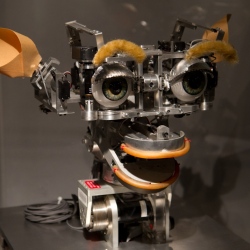
Crowdsourcing can be an effective way to teach a robot how to complete tasks, computer scientists have shown. Learning by imitating a human is a proven approach to teach a robot to perform tasks, but it can take a lot of time. But if the robot could learn a task’s basic steps, then ask the online community for additional input, it could collect more data on how to complete this task efficiently and correctly.
So the team designed a study that taps into the online crowdsourcing community to teach a robot a model-building task. To begin, study participants built a simple model, a car, tree, turtle and snake, among others, out of colored Lego blocks. Then, they asked the robot to build a similar object. But based on the few examples provided by the participants, the robot was unable to build complete models. So to gather more input about building the objects, the robots turned to the crowd.
They hired people on Amazon Mechanical Turk, a crowdsourcing site, to build similar models of a car, tree, turtle, snake and others. From more than 100 crowd-generated models of each shape, the robot searched for the best models to build based on difficulty to construct, similarity to the original and the online community’s ratings of the models.
“We’re trying to create a method for a robot to seek help from the whole world when it’s puzzled by something,” said Rajesh Rao, an associate professor of computer science and engineering and director of the Center for Sensorimotor Neural Engineering at the UW. “This is a way to go beyond just one-on-one interaction between a human and a robot by also learning from other humans around the world.”
